Bob Lazar Vindicated: Area 51 & Flying Saucers Documentary Review

Whether you are a believer in Area 51 and UFOs or not, the story of Bob Lazar is one that has touched your life in some way. If you are a seeker of truth regarding extraterrestrial contact with Earth, you probably know his name.
But even if you do not know his name, you know his legacy…
For those not in the know, Robert Scott “Bob” Lazar is a scientist who agreed to an interview with investigative journalist George Knapp on Las Vegas TV station KLAS. It was his testimony of working at the S-4 facility close to Area 51 which brought Area 51 into the public eye.
Now, a new documentary by Jeremy Kenyon Lockyer Corbell titled Bob Lazar: Area 51 & Flying Saucers sheds new light on Bob Lazar and his story.
As it turns out, it is a vindicating watch—so much so that I suspect even a casual viewer who is not a big believer in UFOs would find Lazar’s testimony compelling.
The Bob Lazar: Area 51 & Flying Saucers Documentary
The new Bob Lazar documentary is part of Corbell’s Extraordinary Beliefs film series. Through the film, Lazar’s story is artfully explored with accompanying narrative from Mickey Rourke.
This is the first time in around three decades that anyone has gotten more than a peep out of Bob Lazar.
Corbell was able to interview both him and Knapp extensively and got both of them to open up not only about the events of the past, but also how those events have shaped their lives since.
Watching this documentary, you walk away with more questions than answers. This is a portrait of a man rather than an intensive probe into the validity of his claims or the issues surrounding his credentials. But therein lies its distinction.
The Story the World Knew in 1989
It all began (for the public, at any rate) back in May 1989. Bob Lazar first attempted to keep his identity secret, calling himself “Dennis.” He also hid his face. During that first interview, he talked about the work he had done reverse-engineering alien ships and technology at a facility called S-4 south of Area 51.
Lazar’s identity did come out, however, so the next time he talked to Knapp in an interview (which was later that year), he did it openly.
Following these revelations, Lazar sank back into obscurity. This is why many people have heard of Area 51, but only UFO enthusiasts tend to know Lazar’s name or story.
While Lazar’s story may have sounded absurd when he first came out with it, it captured the imaginations of people around the world.
It put Area 51 on the map, spawning numerous pop culture references in films, television, and pretty much everywhere else you can name over the decades since. It has made him part of history—even if the man himself has remained relatively obscure.
Some of Bob Lazar’s Stories and Claims Have Been Validated With Time
During Bob Lazar: Area 51 & Flying Saucers, we get a chance to catch up with Bob Lazar. We see his home and meet his wife. We get to tour his place of work and see him doing his job. We find out about the staggering psychological impact which the events of the 80s have had on him.
I will talk more about Lazar as a person in just a little bit—the insights we get into his character are arguably what makes this documentary such a rare gem.
But first, I want to talk a bit more about Lazar’s claims—and how some of them have proven to be true over the years since he gave those first interviews.
S-4 and Area 51
The government has acknowledged the existence of Area 51, though it took them until 2013 to do it. There is still no official acknowledgment of facility S-4.
Indeed, NBC News quotes Lazar (at the link) as saying, “That’s [acknowledging Area 51] a minuscule baby step forward. Maybe a decade from now they’ll acknowledge there’s an S-4.”
Even though the government has yet to openly admit to S-4’s existence, their official statements regarding Area 51 give credit to Lazar’s story.
It is possible too that the government has acknowledged the existence of S-4. According to Knapp in the documentary, “He knew there was a place called S-4. I had called Nellis Air Force Base public information office. They confirmed, told me there was a place called S-4. Now there’s no news story prior to Bob Lazar about any place called S-4. He knew about it.”
This not only seems to affirm the existence of S-4, but also suggests strongly that Bob Lazar did work there. How else could he have known about it?
Element 115
Next, there is the matter of Element 115, which Lazar claimed was used in the alien propulsion systems to manipulate gravity.
At the time that Lazar made that statement, there was no such thing as Element 115 in the periodic table. In 2003 however, an element called “Moscovium” was successfully synthesized in a lab. Since then, it has been referred to by researchers as “Element 115.”
Is it the same Element 115 that Lazar was talking about? Maybe.
We do not know much about it since it has only been synthesized in incredibly minute amounts. But we do know a couple things about it. First, it is unstable. Second, it is heavy—as in very heavy.
It seems unlikely we will get a confirmation anytime soon as to whether the properties of this element would enable it to produce anti-gravity, but it sure gives us something to think about.
Special Forces Studying UFOs
Speaking of that, the government is thinking about UFOs. Indeed, the Department of Defense has poured a whopping $22 million into the “Advanced Aviation Threat Identification Program” to research the matter. The offices for the program were located in the C Ring of the Pentagon.
I remember as a kid when I was visiting the Pentagon, I wondered the entire time whether something like that was going on behind one of the closed doors I walked past. I can’t tell you how cool it is now realizing that something like this actually existed.
In fact, it may still exist, depending on who you ask—just in a less formal capacity than it did when it was actively funded by the Pentagon.
Biometric Tech from S-4
There have been some smaller details of Bob Lazar’s stories which have also proven to be true. One of the most amazing things to me in the documentary concerned one of these revelations. Even though it was a minute detail, it was concrete and specific.
In his testimony of S-4, Lazar described a kind of biometric identification device which was used on the site for access: “It’s a small plate with some pins on it that you could put between your fingers. There’s a bright light above it … The bright light measures the bones in your finger.”
Corbell managed to find a photo of device fitting that exact description in an article concerning another stealth program. He showed it to Lazar in the documentary. Lazar responded, “I never thought I’d see one of these again,” and laughed with surprise.
Lazar’s reaction in the film seems quite genuine—and the photos certainly do seem to depict the exact device he reported way back in his original interview.
This is just one of the numerous details which people have expressed disbelief in over the years. It makes you wonder how many other bizarre details of Lazar’s testimony are also true.
On that note, the documentary reveals that Lazar has been subjected to four polygraph tests. While lie detector tests obviously are not 100% reliable, Lazar’s results cannot be ignored. While they do not prove his story is true, they at least strongly suggest that he believes it himself.
What About Lazar’s Credentials?
One of the most frustrating issues concerning Lazar are his questionable credentials. According to Lazar, he earned degrees from both Caltech and MIT. Neither institution has any records stating that he attended, however, much less earned a degree.
It seems that there is still not sufficient information to confirm or deny whether Lazar attended these universities. The colleges deny his attendance, but as Lazar himself pointed out, one does not simply go to work at Los Alamos (see below) right out of high school.
Did Lazar work at Los Alamos?
This also depends on who you ask. Los Alamos, like the two colleges, has denied that Lazar worked for them. Nonetheless, his name shows up in the Los Alamos National Lab phone book from that time.
According to researcher Stanton Friedman however, “The page from the Los Alamos National Lab phone book with Lazar’s name on it clearly states that it includes employees of the DOE and outside contractor, Kirk Meyer. “K/M” follows Lazar’s name. This proves he worked for K/M, not LANL.”
Of course, all of this could be splitting hairs. Physicist Robert Krangle has apparently stated in an interview that Lazar did work there and that he was present at classified briefings, proving it was in the capacity of a scientist.
Whether it was as an employee or contractor could be off the point (sometimes even employers get confused about how people are classified—just ask a tax accountant).
As I alluded earlier, this is one of those areas where the documentary offers more questions than answers.
It does, however, point out that Lazar held his ground regarding his unverifiable background under oath in a courtroom in 1990. He was potentially facing hard time, so it says a lot about his integrity that he didn’t back down.
A Window Into the Life of Bob Lazar—And More Importantly, the Mind of Bob Lazar
Now I want to get around to talking about Bob Lazar himself. Throughout the documentary, you get a chance to observe Lazar in his home and workplace, and as you do, there are a number of things you will notice about him.
First of all, this man is a competent scientist who does highly technical work each day. This is not a crackpot—this is someone who is clearly very bright and very focused.
The next thing you’ll notice about Lazar is his tremendous authenticity.
Corbell sums this up perfectly, “I think what a lot of people find really compelling about Bob—he legitimately appeared—and appears sometimes—just perplexed by what he saw.”
It’s true—even before Corbell said that, I was thinking almost the exact same thing. While Lazar talks, he is attempting to describe as concretely as possible what he saw and experienced.
But it’s almost like you can see right through him—and what you see is sincere confusion.
He seems to stumble at times internally—not as if he’s looking to conjure up words to describe what he didn’t see, but as if he cannot find the language to articulate something indescribable or bizarre that he did see.
You can almost see him replaying strange memories behind his eyes, searching for the words—not imagining, but remembering.
In short, even Lazar seems to feel that in some respects, his experiences do not “add up.” They are alien (pun intended) even to him.
Because of this, I feel completely convinced that he really believes every word that he says. Whether or not he did really work on alien crafts at S-4, he certainly had the set of bizarre experiences which he is reporting.
What Drives Bob Lazar?
When it comes to trying to evaluate the truth in someone’s words, I think it is essential not just to look at the way in which that person speaks, but also to consider his driving values and motivations.
As Lazar tells his story, you start to understand both why he hasn’t been heard from in so long, and also why he felt the need to come forward about S-4 and the work he did there in the first place.
Curiously, Lazar actually doesn’t strike me as being particularly wrapped up in extraterrestrials at all. While he acknowledges a sense of wonder while recounting his memories, he doesn’t dwell on the existence of aliens at all.
What he does dwell on—and seems so deeply shaken by—is the behavior of humans.
What Lazar gets really impassioned about is government secrecy. It disturbs and enrages him that he saw and handled extraordinary technology with the potential to transform human life for the better—and that said technology is kept from those who could use it to make the world a better place.
In the end, what you are left with is the impression of a surprisingly down-to-earth man with down-to-earth concerns.
Bob Lazar sees the problems which plague human existence, and he believes he also was witness to spectacular solutions. The suffering which exists because those solutions are being held back is unnecessary and inexcusable.
So when Lazar came forward, it wasn’t because he wanted attention. It was because he felt that morality demanded it.
Left with no other option by his conscience, he exposed himself to the world’s derision. Since then, he has been called a liar countless times and is widely believed to be either dishonest or insane.
That would be a terrible burden to carry through life, and it makes it easy to understand why Lazar is reclusive.
It must be hard enough at times to believe the strange things he has witnessed and been a part of—harder still to function while being constantly invalidated by an entire planet.
What person would put himself through such an ordeal without a good reason? The portrait of Lazar that I walked away with after seeing this documentary was one of consistency and integrity. This man did not want to talk to the world about UFOs. He did so because he felt compelled by his experiences.
What Really Happened to Bob Lazar?
At one point during the documentary, Corbell says to Lazar, “One thing that people say about your story and your experience is that you were a puppet, a marionette, that you had no control over what was going on at that time, that you were taken advantage of, compromised, and you were being used as a source of disinformation.”
This is one of the few times at which Lazar seems to lose his cool. He insists that Corbell needs to present him with evidence of this claim in order to make it. He becomes visibly distraught.
This moment definitely grabbed me both because of Lazar’s reaction and because I had already had the same thought myself. After all, even Lazar found it baffling that he was hired for such an extraordinary job in the first place.
It is not to say that Lazar wasn’t qualified—he was. But surely there were others who were equally or more so and also better-networked. Why him and not them?
This certainly leads me to wonder whether Lazar wasn’t the victim of—as Corbell stated—a disinformation campaign. Or perhaps he was part of some psychology experiment.
In both cases though, it would seem quite dangerous to attempt to deceive bright, well-educated minds on the cutting edges of their fields.
Still, it seems foolish to discount the notion. Plus, Lazar’s sudden loss of composure could certainly be linked to some unconscious suspicion that he was being used in such a way.
Then again, it is equally likely (if not more likely) that his anger was simply symptomatic of a lifetime of not being believed. There is no way that has not created permanent traumatic scars. Corbell probably stirred the pot of that trauma with his statement, and it simmered to the surface.
In the End, Lazar Proves One Thing: He is Worth Listening To
When I reached the end of Bob Lazar: Area 51 & Flying Saucers, I still did not know if Bob Lazar really worked on alien spacecrafts.
I still did not know whether human beings have made contact with extraterrestrials or their technology.
I still did not know whether you can create anti-gravity using element 115.
I still did not know whether Bob Lazar was employed directly by Los Alamos or attended MIT or Caltech.
I also still cannot say definitively whether Bob Lazar is telling the truth.
But I can say that if he is a liar, he is an extremely convincing one.
As it is, he convinced me if nothing else that he did work at a secret government facility (probably S-4), and that he did work on some kind of extraordinary technology there.
He also convinced me that he is a grounded, rational, consistent, thoughtful human being with great integrity and that his experiences, whatever their meaning, are valid.
More than that, he came across to me as a deeply moral person who is committed to truth and human welfare.
That is something we all can learn from and emulate.
We need more people like Bob Lazar who are willing to blow the whistle, to stick to their guns, to stand up for the truth of their experiences even in the face of criticism and contempt.
If we do that, maybe we can make this world a better place for everyone, with or without the help of alien technology. And maybe we’ll actually make this a planet worth visiting.

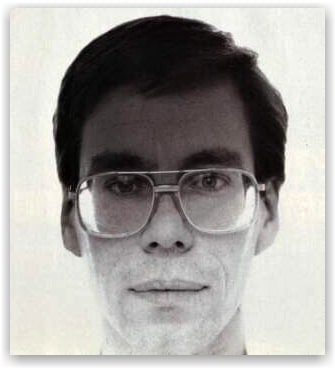
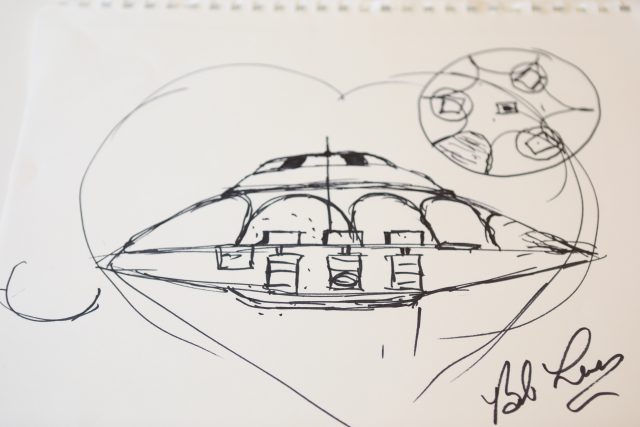
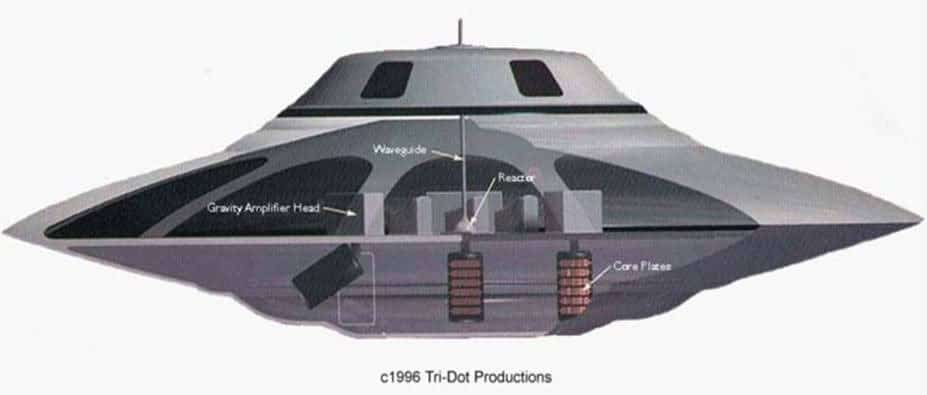
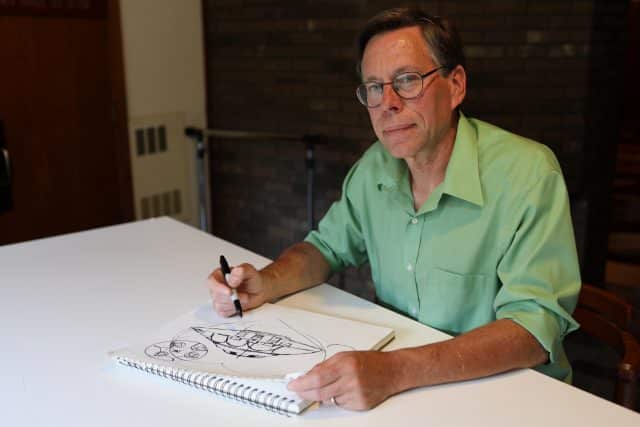
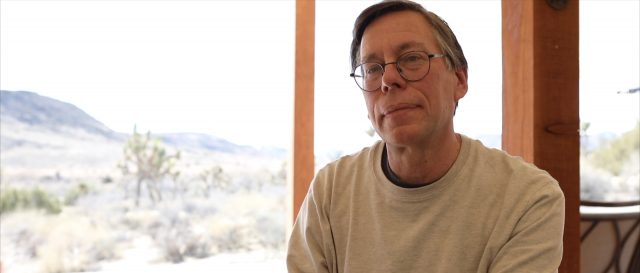
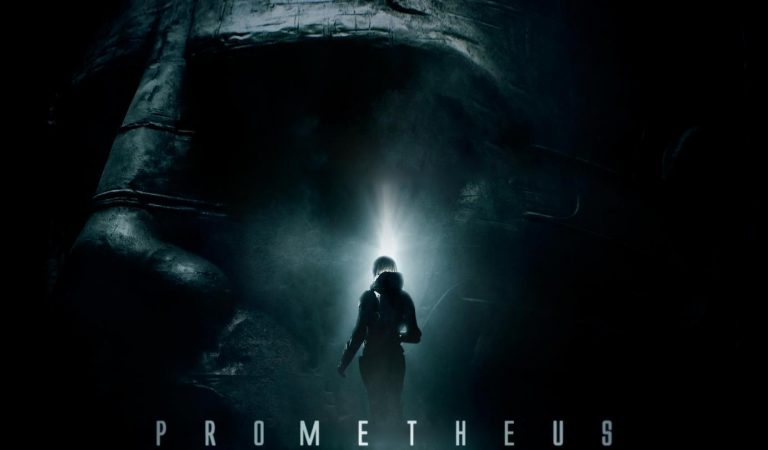

I watched the documentary last night. First off the accompanying voice over from a washed up actor, bathed in “trippy” sounds and images, was an appalling decision on the part of the film’s author. Completely undermining the overall credibility.
Bob Lazar I found extremely convincing. If he’s lying he’s a far better actor than Mr. O’Rourke (which, on reflection, wouldn’t be that much of an achievement…) The review above gets his demeanour correct.
What is conspicuously lacking in the film, which should have had much more research, is compelling evidence of his educational background. Many years spent at any university, let alone MIT, would have created a network of friends, mentors, etc who recall attending the institutions with such a bright and personable individual. This is an absolutely critical deficiency in the film since without evidence to the contrary, simply asserting that the government has deleted his records is the sort of “conspiracy theorising” sans evidence, that seriously undermines convincing evidence in other areas. It is also reasonably easy to rectify.
There is one element of Bob Lazar’s story that does concern me. He states categorically in the recent interview that there was no way that he believed that S4 had any aliens, dead or alive, and that what he saw might have been a mock up used to evaluate the ergonomics of the craft. This is in direct contradiction with his initial, categorical, statements (issued at a far closer distance in time to his employment there) to the contrary. Troubling.
There’s another missing element in his account. According to him there was no obvious control system within the craft. Given the truly “alien” construction, in terms of materials and configuration, how the hell did any human manage to fly these things? No doubt he would say that he has no idea and that the compartmentalisation of information afforded no insight into this question. There is no way of addressing this unless one of the “pilots” comes forward.
Given the scale of the operation described, with a huge number of people necessarily involved, it does seem odd that there have been no other plausible leakers.
The jury’s still out.
When I read about UFOs in general the thought I keep having is “Does the alien/UFO thing really matter?”
I’ve watched, read and “internet” researched everything about it, and after years of doing so, I’ve come to the conclusion that it’s really not that big of a deal. If the president came out tomorrow giving a press conference with an alien (to us) individual, and it was definitively proven that there are others out there, well then, now what? So what? There it is. It’s true. Back to work. Keep paying bills. Keep driving and eating and watching the planet die a slow death as we stumble around like the slightly evolved monkeys we are.
We only know war, material science, consumption, and succumb to the basic tenet that we are nothing more than the byproduct of biological processes resulting in movement based on the secretion of hormones and neurotransmitters. We are extremely maleable (Manufacturing Consent, Century of the Self, Mein Kampf, Self-help books, schema and zeitgeist). Simply a byproduct of our environment. Simplistic and uneducated. Bored and sad most of the time. Prisoners to biology and emotion. Our perception of reality comes only from the cognitive abilities of an organism with a short term memory(and a terrible one at that), driven by this thing called “emotion”.
Webster’s dictionary defining emotion:
“A conscious mental reaction (such as anger or fear) subjectively experienced as strong feeling usually directed toward a specific object and typically accompanied by physiological and behavioral changes in the body.”
Think about that for a really long time. It IS what you are. Which means any attempt at defining or reasoning reality is based on a “preference” or “aversion” towards a stimulus.
The universe doesn’t care how you “feel”. Natural laws define processes on the micro and macro scale and we as the device we are, reside in that system. We are now affecting that system, albeit, on our single little planet, hovering in four dimensional space-time. But its minuscule significance cannot be overstated.
We are just starting our evolution as a species and will be unidentifiable to future generations in our current form. Bob Lazar alluded to an idea, but stopped short of saying it in an interview on Larry King Live so as not to upset anyone or rock the boat. And I believe what he was leaning towards was that God did not create us, but that we may have been seeded by these “aliens” in the form of the premise present in the movie Prometheus. What the movie calls “the engineers”. However, my point is, all of that is irrelevant, because anything I could say is based on emotion and a biological perception, and hence, severly limited in scope and understanding. The sky is “blue because of Rayleigh scattering and the unique form the rods and cones of our retinas take, resulting in a thing we call “blue”. But an infrared camera sees it differently. So too does a bat or a cat or a dolphin. So what we think is “real” is only what we are designed to identify. But that’s not the whole picture. Not even close. We see and hear only a small part of the visual and audio spectrum that is ACTUALLY present, and live inside that window of perception. It’s why we develop machines and computers. We know there’s more to the story and we devise ways of trying to get a better look at what it is. So go ahead, give me the TRUE definition of reality. I’ll sit here and wait, but that’s as futile on my part as it is on yours, because you cannot give that definition anymore than a monkey or a fish can surmise quantum theory or what a large Hadron collider is.
I find it interesting how, as our technology and access to information changes, so to does what we define as real and baseline reality. New information comes at us at an ever increasing rate, and just as we laugh now at the ideas presented in the past, we at that time felt they were the epitome of current and future reality. A silly example would be Star Trek and warp drive systems. We have believed that one day we will get on giant star ships and haul millions of tons of metal and biology at the speed of light “outward” into the universe, but advances in physics and artificial intelligence and the inevitable merger of those discoveries with our biology will result in a form that no longer requires warp drives or food replicators, private rooms to dress and fornicate in. It all just seems so silly and outdated in comparison.
Right now, the best I can contemplate is the idea of biology and artificial intelligence as the universal “end point”, though I’m also aware that it isn’t for the same reason I now know the idea of star trek is outdated. If we in the future, like it is in star trek, are still shooting at each other with our “pew pew” guns mentality and “fighting” for territory and resources, that will be pathetic and sad. It’s monkey like behaviour and it needs to evolve. That status symbol purchase, divine cheesecakes, bikinis and six packs, the car that “defines you as a person”? Its all emotionally and physiologically driven by glandular secretion and the innate desire for dopamine bliss. Computers don’t sue each other in court. They don’t start wars because a handful of them are wired for psychopathy. They don’t “care” about anything. They don’t require “care” or the need for validation or meaning. They just are. Just like the sky and water and space just “is”. WE need purpose and meaning and happiness. But only in the same way a fish NEEDS water to breathe or an oxygen atom NEEDS two hydrogen atoms to make that very water. We are just a biological process. And the thing that comes with biological process, in our specific case, is a thing we call emotion. Which again is action derived from secretion of chemicals in a giant bag of water, protein and electrical synapses that we call a body. That’s just what we are.
Now, we all keep associating UFOs and aliens with the idea that somehow confirming their existence is going to somehow alter our individual lives in some “beam me up, take me to a surreal, life enhancing place or state of being” that will somehow fix all our problems. It will bring us to THE ULTIMATE state of eternal blissfulness based on a never ceasing, constant, insatiable, inexhaustible dopamine fueled high where we are forever smiling….and our every thought and action is in service of this desire.
So in terms of UFOs and aliens….I simply feel that there aren’t any, and that our “belief” in them is actually the statement “I’m a biological system that is in service of the constant need for feel good chemicals, and will move towards any endeavour, up to and including belief in greater beings from other planets that, by default, my brain assumes would be much more aware than I am, and hence would be better equipped to, whether by thought or action, maximize the inherent need of this specific biological system (aka ME) to “feel” good more of the time, and “feel” bad less of the time.
Bottom line for me is this. Your biology is your reality, but reality is not your biology. Biology is only one specific consolidation of energy that has manifested as atoms, or further still, super strings or god knows what further fundamental particles we discover in the future.
The idea of putting bodies in a metal container and sending it across space is such an old way of thinking. Hell, a stargate would make much more sense. But again, that’s only to support the transportation of bodies (usually with guns because we still can’t get past the idea of projecting little pieces of metal at high velocity into flesh of other biological entities to stop it’s own biological system from functioning so as to maximize our own dopamine fueled existen….well you get it by now) to another point in space by bringing the location to us instead of “travelling” to it. Einsteins relativity is real. Spacetime is malleable. We know this now.
But for the last time, our severly limited, little secretion junky existence cannot contemplate reality. So to point at the sky and say “Aliens. Ah seen um.” is just so primitive and telling of our current state.
I don’t care if Bob Lazar is telling the truth or not anymore, because it’s not about Bob or aliens, it’s about our bodies trying to achieve a constant dopamine high through a greater awareness and ability to remove obstacles to that end.
Of COURSE there are other forms of life out there. The universe is infinite. Infinity means all things are not only possible, but 100% happening right now. Then again, maybe that’s all my little brain can come up with because it gives me a little dopamine hit thinking about it, just like I’m getting from being here on this website like you, looking for answers to ultimate questions. But I at least can acknowledge what I am. Not that you can’t or aren’t.
I love people and want every person on this little rock to be ok so one day we can never feel bad or suffer again. But one day biology will stop, and we will move towards identifying, and becoming the base form of what reality is in the first place. As far as my brain can surmise, that’s just the precursor to what we call energy. I have no idea about any of this though, for the very reasons I’ve stated.
Aliens? Nah. You’re just sad and want out, just like everyone else. That will come to an end though as biology becomes what it does next. In the meantime. I love you, whoever you are reading this. Stupid neurotransmitters…makin’ me feel things! 🙂
I read once that “truth” is the currency of the omnipotent. My take is that ya just gotta wait and see. Be patient. As my mother used to say “this too shall pass”
We are not bodies with souls, rather, we are souls with bodies. There is more to this world than is dreamt of in your philosophy. Did I get that Shakespearean snippet right?
Finally, vindication for Bob Lazar, Phil Schneider, Lt Col Philip Corso and so many more good people. They are not lying. More will be proven without a doubt very soon!!!
Bob Lazar is telling us the truth. After studying all of his interviews and statements I can only come to one conclusion. Bob Lazar briefly worked at S-4 on an alien transport vehicle long enough to witness technologies that are 20 to 30,000 years (just my guess) ahead of ours. What he describes makes absolute sense to me when coupled with the thousands of UFO sightings. It is amazing.
You must be willing to think outside of the box to truly appreciate what Bob Lazar has given us. A glimpse into our future.
I agree that our Government should bring out these vehicles and create a pool of top scientists to study them. I also understand why that is probably not going to happen unless a few more people who have worked on these vehicles speak up and tell the world what they know.
Even if our government admits everything and declassifies everything it knows I think it would be like dropping a Trident Nuclear Submarine into the year 200AD. We probably could not learn much, if anything from it. It’s just too far advanced. What I think would happen is, our whole scientific community would have to think beyond what they do not know. Exploring ideas that would have previously been ridiculed.
I do hope that one day the aliens see fit to have an informational exchange with us without government involvement. It could be that they know us better than we know ourselves. Perhaps they know that our world is run by greedy power-hungry people that would use any technology they got from them to set themselves up as a ruling government.
Thank You Bob for doing what you did. In my opinion, you deserve the Nobel Peace Prize.